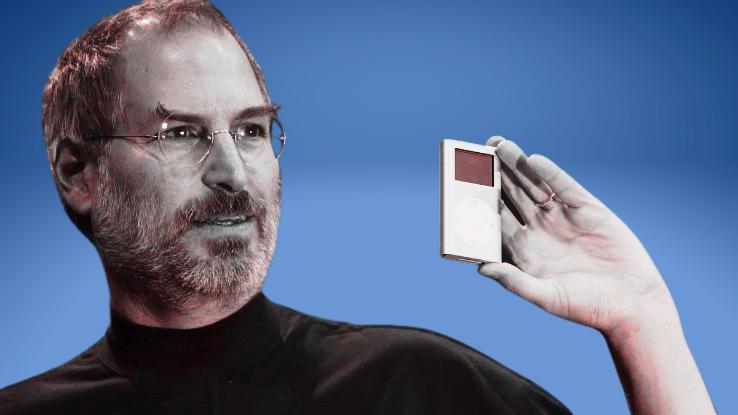
These days, you most likely rely on your smartphone, tablet or laptop for streaming music, but, if you the mood struck, you could still purchase an iPod Touch. This seventh generation iteration of Apple’s once-popular line of portable media players may not hold the same cultural relevance it once did, but the iPod’s importance cannot be understated. Not only was it a landmark invention for Apple — a brand-builder that endeared a wide range of customers to Apple before the company launched its iPhone — but it also changed the music game.
Whether you remember toting around a boombox, Walkman or CD player, we can all agree that mp3 players made listening to music on the go much more convenient. Not only that, but these portable devices allowed you to access a wide-ranging library of music all in once place. And, two decades ago, no one was doing it better than Apple. Released on October 23, 2001, the iPod was a revolutionary device. So, to celebrate the iPod’s 20th anniversary, we’re taking a look back at how Apple’s media player made a lasting impact on art, technology and pop culture at large.
2001–2002 | The First iPod Hits Shelves
While portable mp3 players first came onto the scene in the mid-1990s, they didn’t pose too much of a threat to CD players. The problem? Although loading songs onto a pocketable device sounds convenient, this early mp3 players were either too small or too big — useless, because they couldn’t hold a ton of songs, or clunky, because they contained heavy hard drives. Not to mention, none of those early mp3 players were all that user-friendly.
In the late ’90s, Tony Fadell, who once worked with the likes of General Magic and Philips, was eager to not just make a better mp3 player, but launch a digital music store alongside the product. Big-name companies in the music-tech space, like Sony and Philips, turned Fadell down. But Apple, which wasn’t really a player in this space yet, was just starting what would become its iPod project, and hired Fadell on to help develop the music player’s software. After less than a year of development, Apple shared its new device with the world.
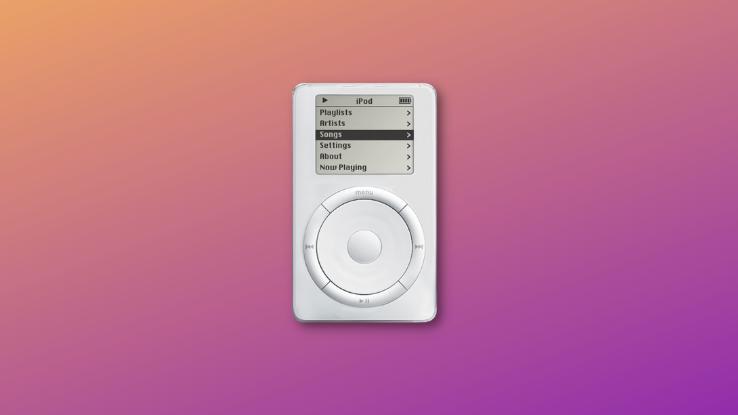
At launch, the iPod had a then-massive 5GB of storage space and an impressive 10-hour (rechargeable!) battery life. That first iteration featured a black-and-white display screen — one that was much more dynamic than those of competitor devices — and, notably, users navigated the device using the signature scroll wheel (later, the click wheel). The main drawback? The little device that could put “1,000 songs in your pocket” was only compatible with Mac products at first.
By 2002, Windows users were able to use the iPod with their existing non-Mac setups. Without a doubt, this smart positioning put Apple on track for unparalleled success, but the iPod’s sleek, unique design also factored into the product’s eventual success. Designers were inspired by the look of ’50s-era transistor radios and that wheel-based interface were inspired by the button layout of contemporary cordless phones.
Much in the same way the brand names Kleenex and Band-Aid became the colloquial terms for tissues and bandages, the iPod became the go-to term for referring to mp3 players. According to Apple, copywriter Vinnie Chieco proposed the name, saying that the iPod prototype reminded him of the EVA Pods in Stanley Kubrick’s 2001: A Space Odyssey (1968).
2003–2004 | The iPod Gets a Redesign — and a Mini Model
Two years after the initial release, the iPod got its first full redesign, which transformed the iconic device into the model you probably think of when you hear the word “iPod.” The first generation iPod’s mechanical scroll wheel had been replaced with a touch-sensitive wheel when the Windows-compatible version hit shelves, but this complete overhaul led to an all-touch interface and a slimmer design.
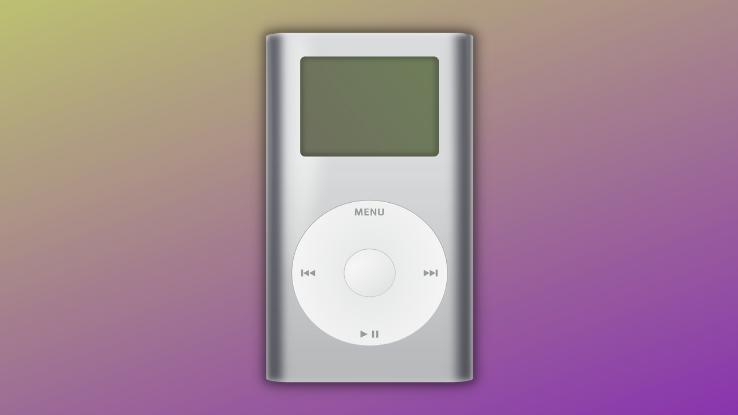
A year later, in 2004, the iPod Mini hit the market. And it was this device that really changed the game. This smaller, more affordable model might’ve had less gigs than the classic iPod, but it made up for that smaller storage capacity by coming in five different colors and introducing the signature “click wheel,” which was used in all subsequent iPod generations until the iPod Touch debuted. But 2004 was also an exciting year for the classic iPod line; the device (known as the iPod Photo) featured a color display and offered a whopping 40GB of storage space. At the time, it was such a novelty to view full-color photos on a portable device — if you can imagine that.
With a variety of models for consumers to choose from, Apple began really hitting its stride with the iPod. According to Apple Insider, the iPod dominated digital music player sales in the U.S., making up over 70% of the market for all types of players. As PC World put it, the iPod “altered the landscape for portable audio players.”
Apple’s advertising strategy didn’t hurt either. First developed in 2003, the now-iconic dancing silhouette ads were instrumental in redefining Apple’s brand. Of course, the standout song choices helped too. Any one of the tunes used in an iPod commercial — “Hey Mama” by the Black Eyed Peas, “Jerk It Out” by Caesars, “Technologic” by Daft Punk, “1234” by Feist, “Shut Up and Let Me Go” by The Ting Tings, “Bruises” by Chairlift — certainly has the power to transport you back to the mid-2000s.
And while we’re still upset that Apple forced that U2 album on us in 2014 without our consent, there’s no denying that the company’s earlier collaboration with the Irish rock band in 2004 was a big moment for Apple and its view on endorsements. In addition to the release of a limited-edition iPod, Apple celebrated the release of U2’s How to Dismantle an Atomic Bomb album by debuting an iPod-exclusive music video of U2’s hit song “Vertigo.”
iPod Mini | Usuario House/Wikimedia Commons, CC BY-SA 3.0
2005–2006 | The iPod: Now in Color — and More Affordable
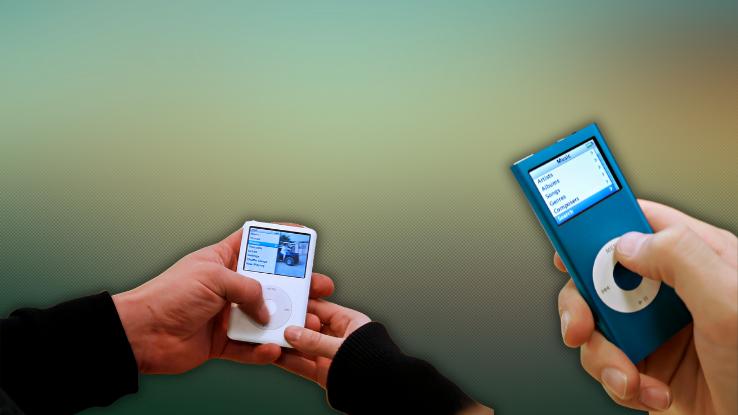
That same year, Apple introduced the iPod Nano, a screen-based iPod that used flash memory. Its storage space went up to 4GB, but this more compact device was still more affordable than classic iPod models. If the shuffle was too low-tech — or if you wanted a more user-friendly interface — the Nano was a great in between model. But if you wanted to go big, Apple’s iPod Video, which provided a staggering 60GB of storage and allowed for video playback, was also available for a steeper price-point. The device’s focus on video content meant a larger screen — and there’s no doubt that this focus helped usher in the age of portable, multimedia devices.
2007–2009 | Who Needs Buttons? The iPod Touch Dominates
In 2007, Apple introduced the iPod Touch, which looked a whole lot like its iPhone. With a large touchscreen, 32GB of storage space, and the iOS operating system on hand, the iPod Touch straddled the line between portable media player and smartphone. While it was primarily used to play music, games and video content, the landmark device also allowed for WiFi-based internet browsing and email access. Not to mention, users could also access the iTunes Store via the device’s app.
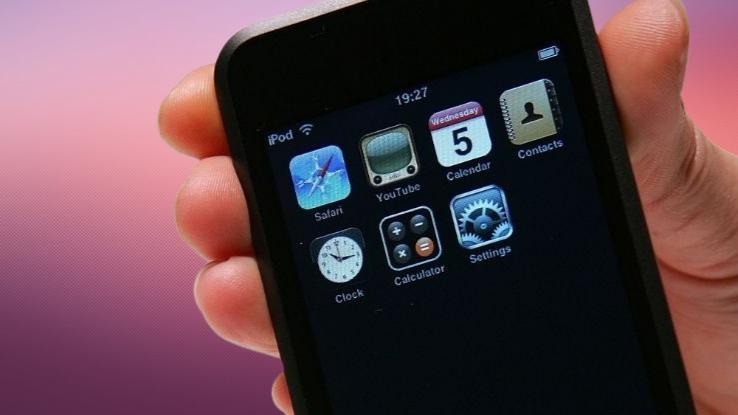
For users who wanted to keep the focus on music, 2007’s iPod Classic featured a whopping 160GB of storage space and a more “low-tech” experience. During this time, Apple sold its one-hundred millionth iPod, which, unsurprisingly, confirmed that the iPod was the best-selling digital music player of all time. This boom also helped Apple build brand loyalty with a broader audience; these same iPod users would perhaps be more inclined to purchase iMacs, MacBooks and iPhones.
Two yers later, a button-less, voice-controlled version of the iPod Shuffle came out as did an iPod Nano outfitted with a video camera. With a variety of iPod options to suit costumer’s varying needs, Apple had created a product beloved across generations — a kind of cultural touchstone that defined the decade. “If there’s anything anyone in this field is chasing, it’s Apple’s quality and simplicity,” Fast Company noted back in 2005. “Pick up an iPod, and you get it, you feel it, you sense it.”
2010–Present | The iPod Lives
By 2010, the iPod Nano resembled the Shuffle in size, though it did feature a touch screen, video playback capabilities and the signature click wheel. The camera, however, was removed in favor of a new innovation; these iPods could be outfitted with bands and worn on your wrist, much like a watch. Meanwhile, the iPod Touch became much more like the iPhone 4; with it, you could text your friends via iMessage or hop on a FaceTime call.
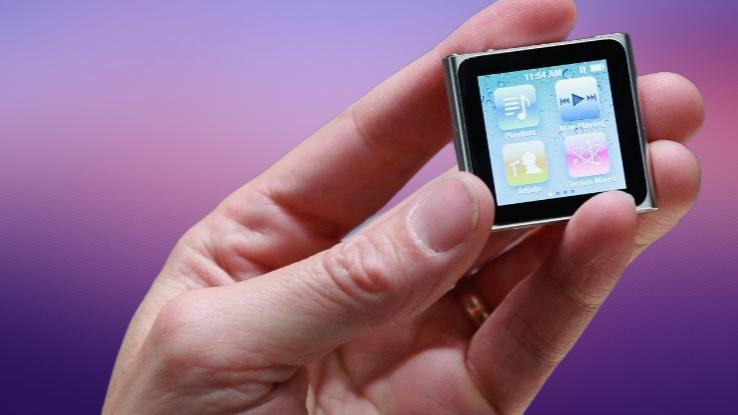
From music player to multifunctional communication and entertainment device, the iPod evolved with its audience’s needs. Since 2017, Apple has stopped manufacturing standalone music players, like the Nano and Shuffle, though you can still pick up an iPod Touch if you don’t want to load music and content onto your smartphone — or if you don’t have a smartphone.
While the iPhone might have become Apple’s marquee product, it’s clear that this ubiquitous device wouldn’t have the impact and reach it currently has had the iPod not paved the way first. Outside of the tech realm, the iPod helped usher in the digital music age — an age of streaming, of buying 99-cent singles instead of whole albums — thanks in large part to iTunes, a platform that succeeded in conjunction with the iPod.
Back in 2004, around the time of the “Vertigo” collaboration, U2 frontman Bono said that the iPod is “the most interesting art object since the electric guitar in terms of music.” Now that’s high praise. And, considering the iPod’s legacy 20 years later, the pocket-sized device definitely lived up to that massive commendation.






